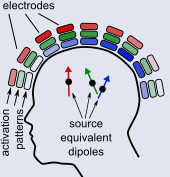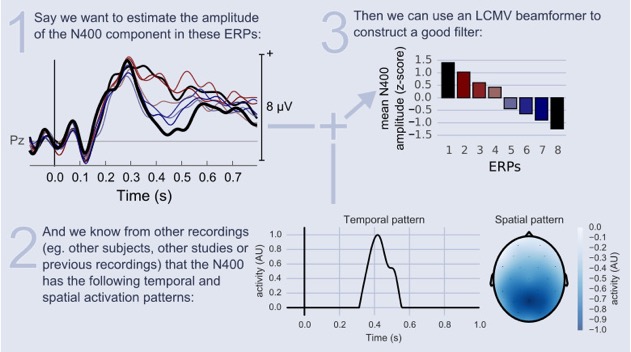Marijn van Vliet, Nikolay Chumerin, Simon De Deyne, Jan Roel Wiersema, Wim Fias, Gerrit Storms, Marc M. Van Hulle, KU Leuven, Leuven, Belgium
For statistical analysis of event related potentials (ERPs), there are convincing arguments against averaging across stimuli or subjects. Multivariate filters can be used to isolate an ERP component of interest without the averaging procedure. However, we would like to have certainty that the output of the filter accurately represents the component. We extended the linearly constrained minimum variance (LCMV) beamformer, which is traditionally used as a spatial filter for source localization, to be a flexible spatio-temporal filter for estimating the amplitude of ERP components in sensor space. In a comparison study on both simulated and real data, we demonstrated the strengths and weaknesses of the beamformer as well as a range of supervised learning approaches. In the context of measuring the amplitude of a specific ERP component on a single trial basis, we found that the spatio-temporal LCMV beamformer is a filter that accurately captures the component of interest, even in the presence of both structured noise (eg., other overlapping ERP components) and unstructured noise (eg., ongoing brain activity and sensor noise). The spatio-temporal LCMV beamformer method provides an accurate and intuitive way to conduct analysis of a known ERP component, without averaging across trials or subjects. Eliminating averaging allows us to test more detailed hypotheses and apply more powerful statistical models. For example, it allows the usage of multi-level regression models that can incorporate between subject/stimulus variation as random effects, test multiple effects simultaneously and control confounding effects by partial regression.
Keywords: Brain models, Electroencephalography, Event-related potentials, Multivariate analysis, Beamformer LCMV, Machine learning


